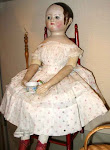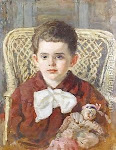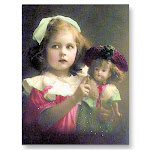 Napoleon Bonaparte of France rose from obscurity as an artillery officer to ultimately crown himself Emperor in 1804. He spread himself from Spain to Egypt to Russia, but was eventually defeated by the combined might of England, Russia, Prussia, and Austria.At last, Napoleon abdicated, only to escape his confinement at Elba to begin his One Hundred Days, gathering French forces as he marched back to France. At Waterloo, Wellington was victorious. Despite his misgivings, Napoleon's power was broken for good.
Napoleon Bonaparte of France rose from obscurity as an artillery officer to ultimately crown himself Emperor in 1804. He spread himself from Spain to Egypt to Russia, but was eventually defeated by the combined might of England, Russia, Prussia, and Austria.At last, Napoleon abdicated, only to escape his confinement at Elba to begin his One Hundred Days, gathering French forces as he marched back to France. At Waterloo, Wellington was victorious. Despite his misgivings, Napoleon's power was broken for good. Born Marie Rose Josephine Tascher de la Pagerie, Josephine became a noted Parisian socialite after marrying Alexandre de Beauharnais.
Born Marie Rose Josephine Tascher de la Pagerie, Josephine became a noted Parisian socialite after marrying Alexandre de Beauharnais.  Marie Pauline...Princess Borghese sister of Napoleon Bonaparte
Marie Pauline...Princess Borghese sister of Napoleon Bonaparte

 She survived both the execution of her husband, and imprisonment during the French Revolution to marry Napoleon Bonaparte, a promising general whose rise soon made her Empress of France.
She survived both the execution of her husband, and imprisonment during the French Revolution to marry Napoleon Bonaparte, a promising general whose rise soon made her Empress of France.  She was popular as Empress, being kind, gracious, gentle and generous. However, Napoleon soon grew frustrated that she did not present him with an heir.
She was popular as Empress, being kind, gracious, gentle and generous. However, Napoleon soon grew frustrated that she did not present him with an heir.
From the Empire to the Bierdermeir Period 1800-1820

 Bonaparte did not ignore men's rôle in the revival of the textile economy and he enforced male military officials to wear white satin breeches on formal occasions.
Bonaparte did not ignore men's rôle in the revival of the textile economy and he enforced male military officials to wear white satin breeches on formal occasions.

Napoleon Bonaparte was keen to make France a leader of fashion and innovator of design and craft skills. He was following a long tradition of promoting the French economy through fashion.
 The Empire Dress
The Empire DressFollowing the French and American revolutions, there was a drastic shift in fashion for both men and women, though for women this change would be short lived. Classical Greek and Roman images were evoked during this period. A classical inspired silhouette was adopted by women, marked by a long, narrow, uncorsetted, and high-waisted design.


 Replacing the Rococo period’s plaits and powdered wigs, were short curly hairstyles with curls combed forward on the face,
Replacing the Rococo period’s plaits and powdered wigs, were short curly hairstyles with curls combed forward on the face,also a braid wound at the top of the head with curls painted to the side was also popular.
 Shoes were flat heeled or sandals. By 1805 warmer materials such as taffeta, silk or velvet were used. Lace was added at necklines and hemlines. Hats were turbans with feathers, flat straw or tulle caps.
Shoes were flat heeled or sandals. By 1805 warmer materials such as taffeta, silk or velvet were used. Lace was added at necklines and hemlines. Hats were turbans with feathers, flat straw or tulle caps.Empress Josephine was a great fashion leader. She was an ideal model for the slender fashions of the day. Ladies dresses had extra fabric gathered into the back and trains were seen again for evening.













































.jpg)






































































Great post Marta! It's not a suprise. Very well done!
ReplyDeleteIt's fascinating the way the history creates fashions.
Thank you for shearing. And again, pardon my english!
Besos
Thanks Alberto, I completely omitted a whole paragraph on Napoleon while trying to get this posted last night. I just noticed that and corrected it. This is a big blog in three or maybe four parts. The Georgian period covers a lot, Napoleon is the first.
ReplyDeleteHugs
Nobody noticed!
ReplyDeleteProbably because you are the only one that read it...lol!
ReplyDeleteThanks love, for your support!
Well, I read every word, but noticed no flaw. Shows my knowledge of history is not all that linear, tee hee. Very nicely done and oh so pretty. You have picked the right musical pieces too, because they are not overwhelming and so fit your sweet history lesson.
ReplyDeleteHugs,
Christine
Thank you Christine, you are such a dear...I'm so glad yo enjoyed it.
ReplyDeleteHugs!